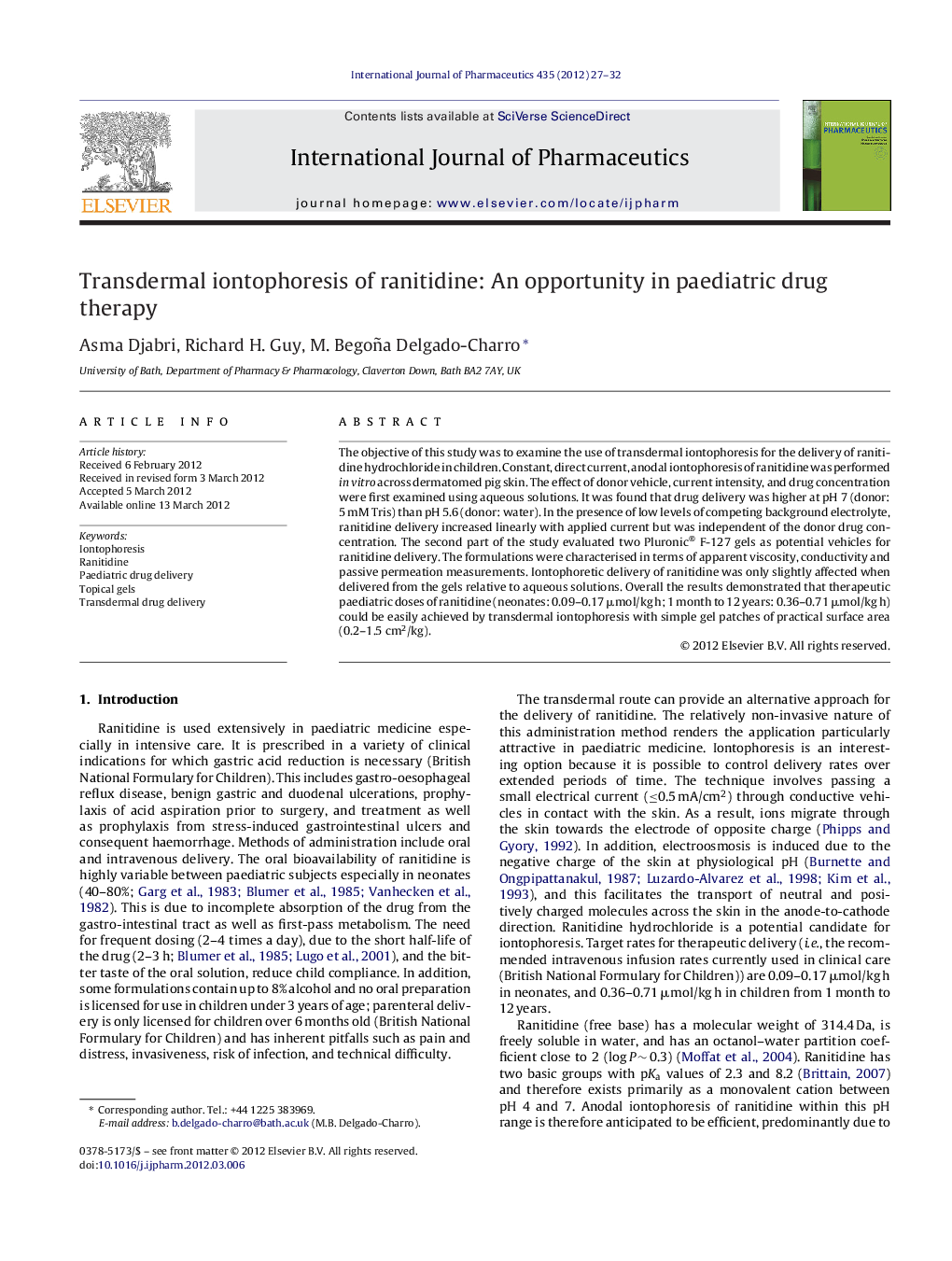| Article ID | Journal | Published Year | Pages | File Type |
|---|---|---|---|---|
| 2502770 | International Journal of Pharmaceutics | 2012 | 6 Pages |
The objective of this study was to examine the use of transdermal iontophoresis for the delivery of ranitidine hydrochloride in children. Constant, direct current, anodal iontophoresis of ranitidine was performed in vitro across dermatomed pig skin. The effect of donor vehicle, current intensity, and drug concentration were first examined using aqueous solutions. It was found that drug delivery was higher at pH 7 (donor: 5 mM Tris) than pH 5.6 (donor: water). In the presence of low levels of competing background electrolyte, ranitidine delivery increased linearly with applied current but was independent of the donor drug concentration. The second part of the study evaluated two Pluronic® F-127 gels as potential vehicles for ranitidine delivery. The formulations were characterised in terms of apparent viscosity, conductivity and passive permeation measurements. Iontophoretic delivery of ranitidine was only slightly affected when delivered from the gels relative to aqueous solutions. Overall the results demonstrated that therapeutic paediatric doses of ranitidine (neonates: 0.09–0.17 μmol/kg h; 1 month to 12 years: 0.36–0.71 μmol/kg h) could be easily achieved by transdermal iontophoresis with simple gel patches of practical surface area (0.2–1.5 cm2/kg).
Graphical abstractFigure optionsDownload full-size imageDownload high-quality image (113 K)Download as PowerPoint slide
